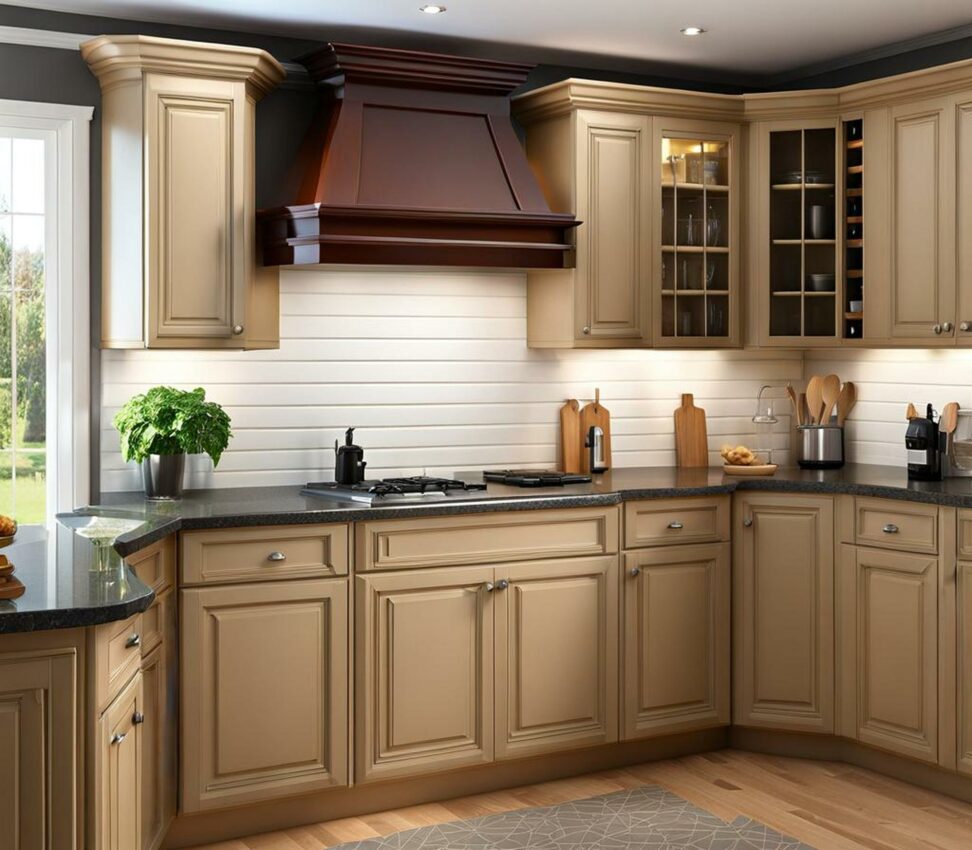Eliminate Stubborn Grease on Kitchen Cabinets in 3 Steps
Grease splatters and spatters on kitchen cabinets are unsightly and can quickly spread grime throughout your kitchen. Getting grease off cabinets can be frustrating, especially once it has had time to cake on. With the right cleaning solutions and techniques though, you can banish grease buildup for good.
In just three simple steps, we'll show you how to eliminate even the most stubborn grease on your cabinets. With some mild dish soap, effort, and attention to detail, you can restore your cabinets to a pristine, grease-free sheen.
Step 1: Evaluate Cabinet Finish and Test Cleaners
Before scrubbing away, take a moment to examine your cabinets. Note whether the surface is wood, laminate, enamel-coated metal, or another material. Check for any existing wear, scratches, or damage. It's also wise to test your chosen cleaning solution on a small, inconspicuous spot before tackling the whole cabinet.

For most cabinet materials, a mild dish soap like Dawn(r) Platinum diluted with warm water serves as an effective degreaser. The surfactants in dish soap latch onto oil molecules, allowing you to simply wipe away grease. Avoid harsh chemical cleaners, as these can discolor or strip cabinet finishes over time.
Selecting the Best Degreasing Solution
If you want an extra-strength cleaner, look for citrus-based degreasers like CitraSolv(r) at your local hardware store. The natural solvents in citrus oils cut through tough, baked-on grease. Vinegar or rubbing alcohol solutions also work to dissolve greasy residue. Always spot-test first, and check if the product is safe for your cabinet materials.
Step 2: Clean Grease with Dish Soap Solution
Now comes the scrubbing. Mix 1 teaspoon of Dawn Platinum dish soap per 1 cup of warm water in a bowl or spray bottle. Dampen a soft sponge or lint-free cloth with the solution.
Working in manageable sections, wipe the warm soapy mixture onto cabinet surfaces in a circular motion. The heat and surfactants help loosen the greasy bonds. Rinse each section thoroughly before moving on.
Effectively Targeting Grease
Pay special attention to splatter "hot spots" near stoves and microwaves using extra solution or a little elbow grease. For cooked-on splatters, let the soap soak for 2-3 minutes before scrubbing.
Be sure to fully rinse and dry cabinets with a clean cloth after cleaning to prevent streaks or water marks. Leaving moisture behind risks warping surfaces.
Step 3: Remove Residue and Disinfect
If greasy residues still plague your cabinets, try this extra step. Make a paste of baking soda and water and lightly scrub stubborn areas. Baking soda particles scour without scratching.
For good measure, wipe the cabinets down once more using a disinfecting solution (1 cup white vinegar per 1 gallon water works well). This kills any lingering bacteria and completes the cleaning process.
Let the cabinets air dry thoroughly before closing. And just like that - no more grease messes plaguing your kitchen!
Prevention is the best medicine when it comes to grease on cabinets. Be diligent about wiping spills quickly before they congeal and regularly wash cabinets down with your dish soap solution.
Also, store commonly used pans and appliances properly. Use cabinet liners or paper towels under items that tend to collect greasy drips. With some care and attention, you can avoid grimy buildup and keep your cabinets glistening!